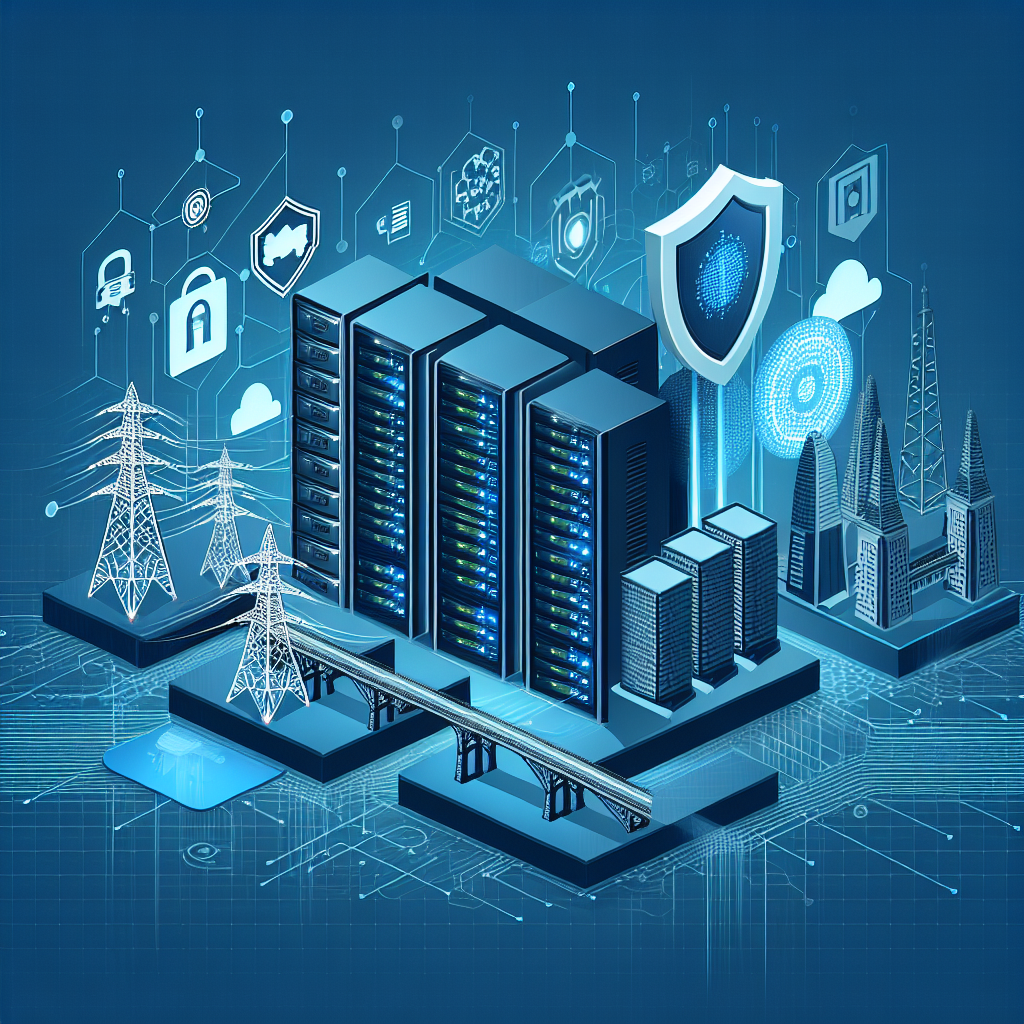Cybersecurity Policies: Protecting National Infrastructure in a Digital Age
In the modern world, where digital connectivity is intertwined with nearly every aspect of our daily lives, the need for robust cybersecurity policies has never been greater. As we enter 2025, the increasing sophistication of cyber threats calls for urgent measures to protect national infrastructure from potentially devastating attacks. The implementation of comprehensive cybersecurity policies is essential not only for securing governmental systems but also for safeguarding private sector entities that play critical roles in maintaining social order and economic stability. These policies are pivotal in shaping resilient defenses against cyber threats that could compromise essential services, disrupt the economy, and threaten national security.
Understanding Cybersecurity Policies and Their Importance
Cybersecurity policies serve as a structured framework that organizations and governments use to protect their data and critical infrastructure from unauthorized access, cyber threats, and data breaches. These policies outline the protocols, responsibilities, and practices that should be followed to mitigate risks associated with digital threats. In 2025, the prevalence of cyber incidents highlights the importance of having well-defined cybersecurity policies to address vulnerabilities across various sectors, including energy, healthcare, finance, and transportation.
Moreover, the landscape of cyber threats is continually evolving. With the rise of artificial intelligence (AI) and machine learning technologies, attackers are leveraging advanced techniques to bypass traditional security measures. Effective cybersecurity policies must go beyond mere compliance and become dynamic, adaptable frameworks that proactively address emerging threats while being flexible enough to accommodate advancements in technology. Organizations are encouraged to undergo regular policy reviews and updates to ensure they remain relevant and effective in a rapidly changing digital environment.
Frameworks for National Cybersecurity Policies
Developing effective national cybersecurity policies involves drawing from established frameworks and best practices that have been adopted globally. One prominent model is the NIST Cybersecurity Framework, which provides a foundation for organizations to identify, protect, detect, respond, and recover from cybersecurity threats. By employing a risk management approach, this framework enables organizations to prioritize resources and actions based on their specific threat landscapes and operational needs.
Another essential framework is the ISO/IEC 27001, which outlines the requirements for establishing, implementing, maintaining, and continually improving an information security management system (ISMS). As countries strive to enhance their cybersecurity policies, adopting such internationally recognized standards can facilitate collaboration, improve interoperability, and ensure that national infrastructures are equipped with robust defense mechanisms that comply with global best practices. Implementing these frameworks is crucial not only to mitigate risks but also to foster trust among stakeholders, including government agencies, private sector entities, and citizens.
The Role of Public-Private Partnerships in Cybersecurity
Public-private partnerships (PPPs) are essential for enhancing the resilience of national infrastructure in the face of cyber threats. Given that a significant portion of critical infrastructure is owned and operated by the private sector, collaboration between government entities and private companies is vital for a comprehensive cybersecurity strategy. By pooling resources, sharing threat intelligence, and investing in workforce training initiatives, both sectors can work together to strengthen their defenses against attacks.
In 2025, the private sector is increasingly expected to take a proactive role in cybersecurity. This includes adopting advanced cybersecurity solutions, fostering a culture of security awareness among employees, and continuously monitoring for vulnerabilities. Government agencies can support this initiative by providing access to resources, guidance, and funding to facilitate the implementation of robust cybersecurity measures. By establishing clear channels of communication and collaboration, public and private entities can create a unified front against cyber threats.
Furthermore, the development of joint cybersecurity exercise programs for both sectors can simulate potential cyber incidents, enabling participants to test their response plans and improve their overall readiness. These collaborative efforts not only help identify weaknesses within national cybersecurity strategies but also promote a sense of shared responsibility for protecting critical infrastructure.
Challenges in Implementing Effective Cybersecurity Policies
Despite the pressing need for effective cybersecurity policies, several challenges impede their successful implementation. One significant barrier is the lack of skilled cybersecurity professionals, which remains a crucial concern in 2025. As the demand for cybersecurity expertise continues to rise, many organizations struggle to recruit and retain qualified personnel. This shortage can lead to overwhelmed teams and inadequate defenses, leaving critical infrastructure vulnerable to cyberattacks.
Additionally, ensuring compliance with cybersecurity policies across various industries can prove difficult. Different sectors may have unique regulatory requirements and risk profiles, making it challenging to create a one-size-fits-all approach. Efforts to harmonize compliance standards and incentivize adherence through government support and industry collaboration are essential. Moreover, fostering cooperation among stakeholders can lead to more streamlined policies that facilitate compliance while ensuring effective protection against cyber threats.
Another formidable challenge is keeping cybersecurity policies up-to-date in a fast-evolving digital landscape. As new technologies emerge and cyberattack methods become increasingly sophisticated, policymakers must be proactive in assessing and revising their strategies. This necessitates continuous research, collaboration with experts, and the ability to swiftly adapt to the ever-changing threat landscape to enhance national resilience.
Future Directions for National Cybersecurity Policies
Looking ahead, national cybersecurity policies must evolve to address the infrastructure challenges presented by emerging technologies such as the Internet of Things (IoT), 5G connectivity, and quantum computing. In 2025, as the world becomes more interconnected, the potential attack surface expands exponentially. Policymakers need to account for the unique vulnerabilities inherent in these technologies when formulating cybersecurity strategies.
One promising direction is the integration of AI-driven cybersecurity solutions. These solutions can enhance threat detection and response capabilities, enabling organizations to analyze vast amounts of data and identify anomalies in real time. However, the implementation of AI in cybersecurity must be approached with caution, given the potential for adversarial attacks that exploit the technology’s weaknesses. Developing ethical guidelines and standards for AI applications in cybersecurity will be crucial to ensuring their effectiveness while minimizing risks.
Another pivotal area for the future of cybersecurity policies is the focus on improving public awareness and education. In 2025, it is essential for citizens and employees at all levels to understand the importance of cybersecurity. Implementing educational programs that emphasize safe online practices and the significance of adhering to organizational policies can empower individuals to become an integral part of the cybersecurity defense mechanism, ultimately contributing to the protection of national infrastructure.
Conclusion
In conclusion, as we navigate the complexities of the digital age in 2025, the importance of comprehensive cybersecurity policies in protecting national infrastructure cannot be overstated. By understanding the frameworks, fostering public-private partnerships, addressing implementation challenges, and preparing for future technological advancements, nations can enhance their resilience against evolving cyber threats. Ultimately, a proactive and adaptive approach to cybersecurity will safeguard critical services and ensure the stability and security of societies in the face of increasing digital threats.
Frequently Asked Questions
What are cybersecurity policies?
Cybersecurity policies outline the protocols, practices, and responsibilities organizations must follow to protect their data and critical infrastructure from cyber threats. They aim to mitigate risks and enhance organizational security.
Why are cybersecurity policies important for national infrastructure?
Cybersecurity policies are vital for ensuring the integrity, availability, and confidentiality of critical services, protecting against cyber threats that could compromise national security and disrupt social order.
How can public-private partnerships improve cybersecurity?
Public-private partnerships enhance cybersecurity by facilitating collaboration, sharing threat intelligence, pooling resources, and fostering a culture of security awareness, enabling a unified front against cyber threats.
What challenges do organizations face in implementing cybersecurity policies?
Challenges include a shortage of skilled cybersecurity professionals, compliance with diverse regulatory requirements, and keeping policies up-to-date with the rapidly evolving digital landscape.
What does the future hold for cybersecurity policies?
Future directions for cybersecurity policies involve integrating AI solutions, focusing on public awareness and education, and adapting to emerging technologies like IoT and quantum computing to address their unique vulnerabilities.












